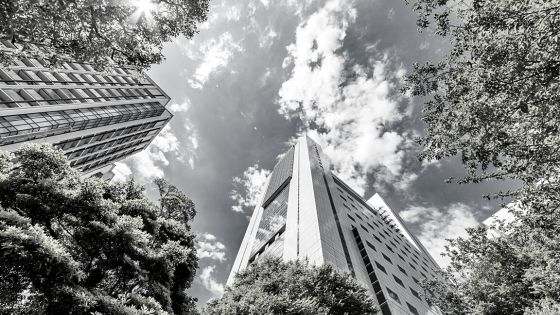In Sydney’s vibrant cityscape, surrounded by towering skyscrapers and bustling streets, there’s a growing movement in sustainable architecture. Passionate about this shift and deeply committed to the future of sustainable design is Alexander Bitterman — the founder of B. Architects.

In a world grappling with climate change and environmental degradation, Bitterman and his team are passionate about designing buildings that are not only aesthetic marvels but also bastions of sustainability.
“Sustainable architecture is more than a trend; it’s a necessity,” asserts Bitterman. “Our goal at B. Architects is to design buildings that harmonise with the environment, using materials and technologies that reduce our carbon footprint and promote energy efficiency.”
The Green Blueprint: Eco-Friendly Building Design
The journey to sustainable architecture begins with design – a blueprint that considers the environment at every turn. Bitterman emphasises the importance of integrating natural elements into building designs. “We focus on maximising natural light and air circulation, which significantly reduces energy consumption,” he explains. This biophilic approach not only reduces reliance on artificial heating and cooling but also creates spaces that enhance the well-being of its inhabitants.
Bitterman’s philosophy extends to the very materials that make up these structures. “We prioritise renewable and recycled materials,” he says. “From bamboo flooring to reclaimed wood and recycled metal, we’re exploring how different materials can contribute to sustainability without compromising on quality or aesthetics.”
Energy Efficiency: The Core of Modern Buildings
Energy efficiency is a cornerstone of sustainable architecture, and Bitterman’s projects exemplify this. He discusses the incorporation of advanced insulation techniques, energy-efficient windows, and smart building technologies that adapt to environmental conditions to optimise energy usage. “Our recent projects include buildings with green roofs and walls, which not only improve air quality but also provide natural insulation,” he adds.
Renewable Energy: Harnessing Nature’s Power
The integration of renewable energy sources is pivotal in Bitterman’s architectural endeavours. Solar panels, wind turbines, and geothermal systems are no longer futuristic concepts but present-day realities in his buildings. “We’re not just designing buildings; we’re creating self-sustaining ecosystems. Our projects increasingly feature solar panels and geothermal heating systems, harnessing nature’s power to fuel our buildings,” Bitterman notes.
Water Conservation: Every Drop Counts
In sustainable architecture, water conservation holds a place of paramount importance. Bitterman highlights innovative techniques like rainwater harvesting and greywater recycling systems in his projects. “Every drop counts. We implement systems that collect rainwater for landscaping and use greywater for non-potable purposes, significantly reducing water waste,” he says.
Community and Environment: A Harmonious Coexistence
Bitterman’s vision extends beyond individual buildings to the broader community and environment. “Sustainable architecture is also about creating spaces that foster community engagement and respect the local ecology,” he states. This involves designing public spaces that encourage community interaction and choosing construction practices that minimise environmental disruption.
Challenges and the Road Ahead
Despite the clear benefits, the path to fully sustainable architecture is not without challenges. Bitterman acknowledges the higher initial costs and the need for skilled professionals well-versed in green technologies. “The initial investment is higher, but the long-term savings and environmental benefits are immense,” he asserts.
Looking to the future, Bitterman is optimistic. “The future of architecture is undoubtedly green,” he concludes. “It’s about innovating, learning, and adapting. At B. Architects, we’re committed to being at the forefront of this green revolution, designing not just for today but for a sustainable tomorrow.”
In Alexander Bitterman’s words and work, one sees a blueprint for a greener future – a world where buildings breathe with life, where sustainability is ingrained in every brick and beam, and where architecture and nature exist in beautiful harmony.























